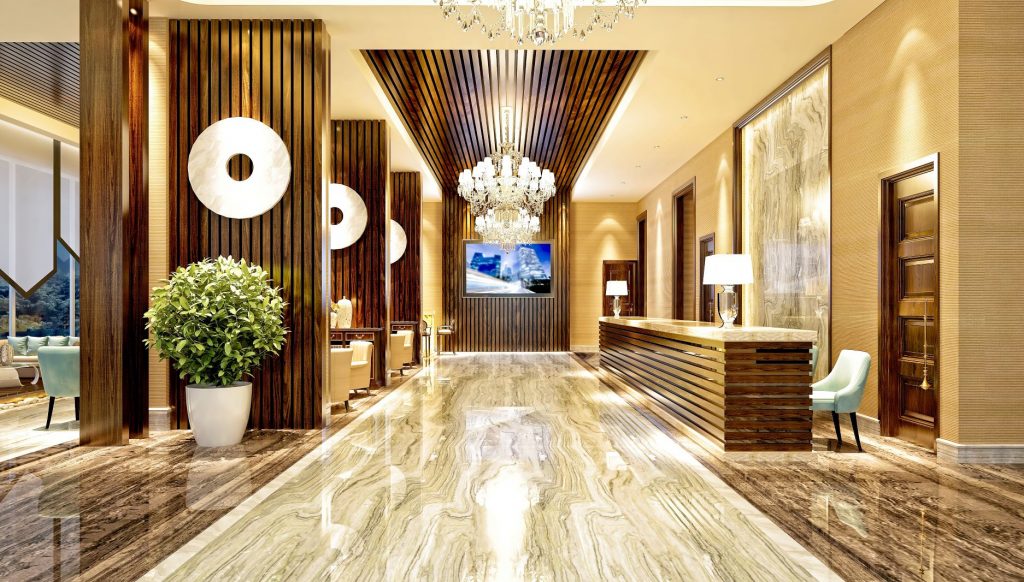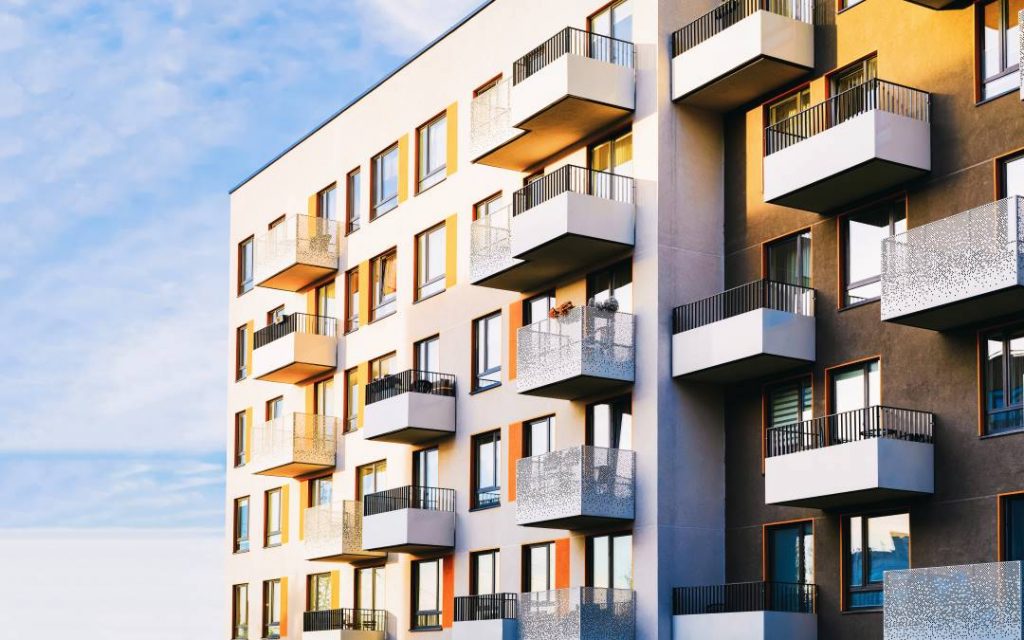In business, when we talk about ‘keeping the lights on’, we usually mean it as a metaphor for maintaining the minimum systems and infrastructure required to keep a business operational. At the end of the day, though, part of ‘keeping the lights on’ is, well, actually keeping the lights on.
Essentially, energy is part of the minimum infrastructure that any business must invest in to remain operational — whether it be lighting, HVAC climate control systems, or any kind of specialized equipment that a business relies on to deliver on its service or product offering. In other words, anything that impacts a business’ energy consumption will also impact its operating costs, and the minimum investment required to ‘keep the lights on’.
Unsurprisingly, then, advances in energy management technology have had a profound impact on many businesses across many industries. But nowhere have the benefits of energy management been felt more by both businesses and their customers than in industries that specialize in lodging. After all, for businesses specializing in either temporary accommodations or longer-term housing, energy consumption is something that happens at both the business and consumer level.
Hotels & Energy Management
From seasonal fluctuations and evolving guest expectations to the rise of Airbnb and the realities of a post-covid world, the hotel industry faces a variety of challenges. And in meeting these challenges, new hotel management trends have arisen, forcing hotel operators to adopt new best practices.
Unsurprisingly energy management has been a critical best practice that hotel managers have implemented to remain competitive and, well, keep the lights on. And this best practice has impacted the hotel industry on a number of fronts.
Cost & Revenue Management
Energy costs represent a significant chunk of a hotel’s overhead, comprising as much as 60% of its utility expenditures. However, just because energy costs are a part of a hotel’s overhead, that doesn’t mean that those energy costs have to be fixed costs.
Indeed, there are a number of smart energy management technologies that hotels can implement to help them reduce energy costs and optimize revenues without compromising on guest experience. And these technologies have a direct and positive impact on a number of hotel KPIs, especially those KPIs that factor in operational costs — including CPOR, GOPPAR, and PROFPAR, to name a few.
Smart HVAC Technology
Environmental controls are an essential part of any hotel’s service offering. After all, if a hotel cannot offer basic creature comforts to their guests (such as heating or air conditioning), they’re not even in a position to open their doors (and rooms) to guests in the first place.
This is why hotels have turned to smart energy management systems to optimize their HVAC energy consumption and reduce energy costs. Specifically, by installing occupancy sensors and smart thermostats in guest rooms, hotel managers can monitor and respond to real-time fluctuations in occupancy.
Furthermore, energy management technology such as Verdant EI will take those energy savings further by employing sophisticated machine learning algorithms to analyze data from those sensors (including occupancy data, historical thermodynamics, and local weather patterns) to continuously optimize energy consumption on an ongoing basis, all year round. The cost savings from Verdant’s energy management systems are so significant, in fact, that they have a payback period of only 12-18 months.
Smart Lighting Technology
Smart lighting systems are another energy management technology that hotels are using to reduce energy costs. Similar to HVAC systems, smart lighting systems use occupancy sensors (as well as programmed lighting schemes) to curb and manage energy consumption based on real-time occupancy trends.
It’s also worth noting that both Verdant’s own ZX and VX smart thermostats can integrate with some popular third party lighting systems, allowing the same occupancy sensors to adjust lighting levels according to whether a room is occupied and the time of day. Integrating a smart lighting system with Verdant EI, moreover, also offers hotel operators the added benefit of being able to monitor and optimize both lighting and HVAC energy consumption through a single interface.
Increasing Hotel Property & Resale Value
Generally, the more a business reduces costs, the greater its profitability and the higher its valuation. Well, hotels are no exception, and energy management technology has been shown to increase both a hotel’s valuation and its resale value:
Let’s consider the example of a REIT that installs Verdant’s energy management thermostats in one of their typical limited-service hotels, with the intent of selling that property three years later.
In year one, the purchase of Verdant’s system will cost the ownership group approximately $22,000. […] The savings after year one are about 20% of the overall electric bill, which translates to $14,400 annually.
In years two and three, the system continues to save energy at the same pace, creating additional savings of $14,400 per year. By the end of year 3, the system has saved ownership $43,200 in operating expenses, at a cost of $27,000 in capital expenditure […]
Since the $14,400 in annualized savings is a direct increase in annual EBITDA financial statements, we simply multiply $14,400 by the EV-to-EBITDA multiplier (13.37 as of today). The resulting calculation shows that Verdant’s energy management system has created over $192,000 in additional property resale value. Add in the 3 years’ worth of actual electricity cost reductions, and Verdant’s energy management system generated over $235,000 in additional value for this hotel in just 3 years while requiring a total investment of only $27,000.
The ROI of hotel energy management technology, then, is clear. Within 3 years of a $27,000 investment, a hotel operator can increase the net resale value of their property by $208,000. Indeed, for hotel operators, investing in energy management tech is just good business sense.
Attaining Sustainable Hotel Operations
The rising pace of climate change and the collateral costs to the global economy have made sustainable business practices a greater priority than ever before. For hotels, this has meant reducing their carbon footprint is at the operational level.
After all, individual consumption habits differ widely from guest-to-guest, and while hotel operators can offer those guests more sustainable options, there’s no controlling how any given guest adjusts their HVAC settings, how many showers they take (or how long those showers are), or how much they avail themselves of other amenities, such as room service. So by implementing sustainable practices at the operational level, hotel operators can curb the environmental impact of even the least environmentally conscious guests.
Specifically, just as energy costs comprise as much as 60% of utility costs, it also comprises 60% of a hotel’s carbon footprint. Unsurprisingly, then smart energy management systems play a significant role in a hotel’s sustainability. As they reduce energy costs by optimizing energy consumption (without compromising on guest experience, of course), they also reduce the overall carbon footprint of that property. In other words, energy management tech allows hotel managers to tie their operational goals in with their sustainability goals.
Multifamily Property Management
While the hotel industry might offer the shortest-term accommodations to consumers, it is not (by any stretch) the only industry to offer lodging services in general. Specifically, multifamily housing properties also represent a significant sector of the accommodations industry. Indeed, while the margins on monthly rents do not compare to those of hotels’ nightly rates, there are usually far more multifamily properties in any given area than there are hotels. And similar to the hotel industry, multifamily operators have witnessed how energy management tech is changing their business — and enjoying the benefits.
Multifamily Infrastructure
Nowhere in a multi-family property has energy management technology been more immediately noticeable than in living spaces and common areas. Specifically, these technologies are being integrated directly into multifamily infrastructures, and changing the ways that tenants experience and interact with their home environments.
Smart Thermostats
When residential smart thermostats come to mind, most people think of the more common consumer-grade models, such as those offered by Ecobee or Nest. It’s important to remember, though, that not all smart thermostats are created equal, and these consumer-grade models are more suited for private homeowners.
Similar to their hotel counterparts, multifamily operators require a more commercial-grade smart thermostat option — one that’s capable of managing multiple units and providing insight into optimizing property-wide energy consumption. And also similar to hotels, these commercial-grade smart thermostats should integrate with occupancy sensors that can monitor and automatically adjust to real-time fluctuation in occupancy patterns in both private units and common areas.
Smart HVAC Technology
Of course, commercial-grade smart thermostats and occupancy sensors represent only the hardware side of the equation. Multifamily operators can also leverage the same energy management software solutions that hotel operators do — allowing them to get even more out of their hardware investment, and further optimize energy consumption and costs.
And the advantages of smart energy management systems can extend beyond reducing energy costs across common areas and private units. Verdant’s EI smart energy management platform, for instance, features remote management features that allow multifamily operators to monitor HVAC performance and ensure that HVAC systems are operating at optimal levels. This includes diagnostic alerts whenever an HVAC system is not operating within expected parameters, allowing maintenance staff to identify, diagnose, and resolve malfunctions before they inflate energy and maintenance costs.
Energy Efficient Appliances
Just as hotel operators cannot fully control how much energy an individual guest consumes, multifamily operators are similarly unable to control the energy consumption of tenants in their private residences. For instance, the degree to which tenants heat/cool their units or use their appliances is completely up to the discretion of that tenant (and their family).
But whereas hotel operators are limited to smart energy management systems to curb guest energy consumption, multifamily operators can implement further energy management measures by installing energy efficient appliances. Specifically, by upgrading outdated appliances such as washers, driers, refrigerators, stoves, and/or dishwashers to more energy efficient models, multifamily operators can further reduce the energy consumption of their tenants — and the energy costs they incur.
High Efficiency Water Heaters
Water heaters are yet another way in which multifamily operators are implementing energy management systems. After all, from laundry appliances to showers, heated water is a basic amenity for any multifamily tenant. As NAI Global illustrates:
Heating water is a huge opportunity to help you conserve energy in your community. There are various strategies for operating water heaters more efficiently, including installing solar hot water systems, improving distribution systems, and increasing the thermal efficiency of the water heater. Not only will the more efficient options be attractive to your residents, you will see an increase in savings, as well.
In other words, high-efficiency water heaters allow multifamily operators to not only reduce energy costs, but also support occupancy goals by promising tenants the added-value of additional energy costs savings.
Multifamily Revenue Management
A common attraction of investing in a multifamily property is the stability of the return on that investment. Profits may not shatter any records, but barring unforeseen maintenance costs, the ROI on that investment should be relatively reliable.
Unsurprisingly, then, many multifamily operators prefer to rely on proven, traditional revenue models — seeing them as the best way to manage risk and maximize returns. That being said, however, there still remains a segment of operators who tend to be more aggressive and proactive in exploring new revenue opportunities made possible through emerging market trends or new technologies.
Energy management technology appeals to both these schools of multifamily revenue management thought. On the one hand, conservative operators are attracted by the cost-saving, short payback periods, and ROI of smart energy management tech. On the other hand, less risk-averse multifamily managers are attracted to a more proactive, forward-thinking value-proposition of such technology. So whichever camp a particularly multifamily operator belongs to, energy management technology is changing their approach revenue management — allowing them to cut costs and improve returns in the short-, medium-, and long-term.
Student Housing
Of course, between the short-term accommodations of the hotel industry and the longer-term options offered by multi-family properties, there are a number of more medium-term housing industries, among which student housing is one. Indeed, student housing is often characterized by both group/communal living, but over several months or semesters (rather than days/weeks or years).
Unsurprisingly, then, student housing managers face many of the same operational and resident experience challenges that hotel and multifamily operators do. And, consequently, energy management technology is having a similarly profound impact on how student housing operators do business and manage their properties.
Student Resident Experience
Much like any other industry, student housing is in the midst of being reinvented by smart technology. From AI to IoT to machine learning, a variety of smart tech is being used to augment and enrich student housing experience.
And energy management is one of those key areas in which smart tech is being used to reinvent resident experience. As Marketing Dive points out, “While St. Louis University (SLU) appears to be the first university to bring Alexa-enabled devices to every on-campus student, other schools have experimented with a similar strategy. The Georgia Institute of Technology, Northeastern University and Arizona State University provided some students with Echo Dots during the 2017-2018 academic year in order to research the benefits of virtual personal assistants for students.”
In other words, student housing operators are installing smart thermostats that allow student residents to adjust their dorm room temperature outside the default, pre-programmed heating/cooling schemes. Furthermore, the machine learning algorithms that manage these smart thermostats not only ensure that a dorm room is not over-heated/cooled when it is unoccupied, but also learn from resident occupancy patterns to ensure that the room is heated/cooled according to historical resident preferences before they return to their room or while they’re sleeping.
Student Housing Operations
Of course, the benefits that smart energy management technologies afford the student housing industry extends well beyond resident comfort. As the Stanford College Puzzle explains, “Colleges and universities are already using smart lighting, HVAC systems, and other mechanical equipment to optimize facility operations.”
Specifically, student housing operators are also leveraging smart, machine learning HVAC technology to manage energy consumption in real-time and reduce energy costs. Similar to hotels and multifamily properties, student housing managers are installing commercial-grade smart thermostats and occupancy sensors that allow them to monitor, track, and respond to real-time occupancy patterns in both dorm rooms and common areas.
Sustainability in Student Housing
Insofar as students are preparing to inherit industry, the economy, the environment, and the world, it comes as little surprise that they are also particularly mindful of sustainability practices. What this means for student housing managers trying to attract the next year’s batch of student residents, is that they must create more eco-friendly campus living experiences.
And energy management technology is helping them do just that. From smart HVAC systems to high-efficiency appliances, a variety of energy management technologies are not only helping student housing managers reduce costs and optimize operations, but offer eco-conscious student residents the added value of a more sustainable student housing experience.
Senior Living Residences
Students and young families aren’t the only consumers looking for medium- to long-term housing options. Whether it’s to downgrade their cost-of-living, to join an age-appropriate community, or simply have more direct access to other amenities, senior citizens are also often interested in medium- to long-term housing solutions. And this is precisely where senior residences come into the picture.
Indeed, given that the “number of Americans ages 65 and older will more than double over the next 40 years, reaching 80 million in 2040,” the senior residence industry is poised to grow exponentially. And as the demand for senior housing grows, so will the challenges and costs associated with providing for a greater number of senior residents. Fortunately, energy management technology is helping senior residence operators overcome some of those challenges and mitigate some of those costs.
Resident Comfort
For many senior residents, environmental comforts are paramount when it comes to an amenable resident experience. Indeed, different states of health often require varying degrees of climate control or lighting to achieve a comfortable housing experience.
By implementing occupancy sensors and smart thermostats backed by machine learning energy management algorithms, however, senior residence managers can ensure that residents always enjoy climate settings perfectly suited to their needs. Indeed, not only will occupancy sensors trigger pre-programmed heating/cooling schemes tailored to a resident’s needs, but the machine learning algorithm that manages those sensors and thermostats will analyze, learn from, and adapt to real-time changes in resident occupancy. And the result will be a more seamless and comfortable overall senior resident experience.
Operational Costs
Of course, the benefits of energy management technology extend well beyond resident experience. They also include the same kind of cost-savings enjoyed by hotels, multi-family properties, and student housing facilities — especially in the context of an ever-growing resident population. Specifically:
Energy consumption represents a significant overheard for senior living facilities. From climate control to lighting, from private rooms to common areas, energy consumption is tied directly to resident safety and comfort. It’s no surprise, then, that senior residence operators can significantly bolster their profit margins by using smart energy management systems to eliminate superfluous energy consumption.
So by integrating energy management technology into their rooms, apartments, and common areas, senior housing managers can significantly reduce overhead, which not only improves their profitability, but affords them additional resources that they can then re-invest in resident care.
Growth & Evolution
Evolution is an inescapable condition of both life and business. But evolution isn’t so much about change as it is about adaptation. As the world evolves, so do market conditions, and so must industries. It’s up to the businesses in those industries, then, to adapt to these new conditions if they want to grow and continue to flourish.
In the case of industries that provide accommodation services, this couldn’t be more true. From short-term lodging offered by hotels to medium-term student and senior housing to more long-term housing solutions offered by multifamily properties, the realities of overhead costs and market demand are changing.
One of the most immediate ways that operators can meet these new realities, however, is through energy management tech. These technologies not only reduce operational costs, allowing operators to remain competitive, they also offer guests and residents increased comfort and peace of mind throughout their stay.





